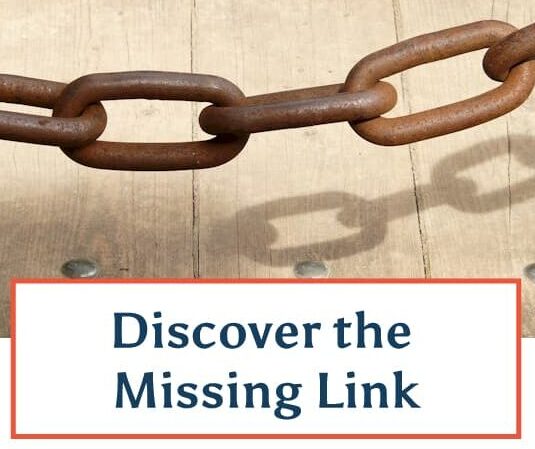Aly and I had lunch with my Mom and Dad at a trendy fusion restaurant with a highly creative menu. While we were happily trying Turkey Wraps with Butternut Squash inside, what did my Dad have? A steak sandwich and a Coke.
“Dad,” I said, “Why not try something new?”
My Mom chimed in:
“Because we won’t eat what we don’t understand.”
I cracked up laughing because it seemed such a preposterous and over-the-top statement, especially since Aly was sitting next to me trying quinoa for the first time.
But on the way home I got to thinking: maybe she’s right!
Aly had asked the waitress: What Is Quinoa? She gave him a full description of what it was, how it was cooked and how it would taste.
She took the mystery out of this new item and made Aly feel safe in trying it.
It’s not just men — it’s all of us — who won’t try something new unless they feel safe about it
When you’re explaining to your customers the service or product you’re offering, you must help them to understand everything that’s involved with it:
- what it does
- what it doesn’t do
- who it’s for and who it’s not for
- who are you and why should they listen to you
- what it costs
- how much time they’ll have to invest
- what to do if they don’t find it valuable
- what outcomes to expect
- how to buy it
- what will happen after they buy it
Some love the risks, others are more cautious
There are two types of buyers:
Some buyers are risk-takers and love to have the newest, latest thing regardless of whether there might be some glitches. They want to be the first to have an item, a new experience, be the beta tester for a program. Often these are the customers who already know you and trust you, so in their minds, the risk isn’t actually too high. But they still won’t buy if they don’t understand a feature, a benefit, or if the price seems too high for the benefits they’ll get. You need to help them see that the price is equal (or less than) the benefits.
Next are those customers who don’t want to be “bleeding edge” — but they do want to get in on a great service or product that will help them. They have to think about it, weigh it in their minds. They can take days and weeks to decide, so you have to keep your offer in front of them, and answer any questions they have. They might call you, or email you, or put a question in your blog post comments. They might text you ,or communicate via social media. Your job is to be present on whatever channel they use to communicate, and answer their questions thoroughly so that they understand the offer completely.
Because customers won’t buy what they don’t understand. So that’s the focus of your marketing.
So the next time you’re at a restaurant and you see “chicken dancing in a white wine reduction” — ask them whether they mean a glaze or marinade, or whether they mean a gravy!
Do you have a story about a time you walked away from an offer you didn’t understand? What comes up for you when you try to put together your words around your service or product?

 Why Redesign Your Business?
Why Redesign Your Business?

Karen this is SO true! I have walked away from many offers (and even some food) because I didn’t understand everything and the sales pages were too vague.
Thanks for this reminder. I’m making some new sales pages today and I’m going to use your list of questions as a framework.
Sometimes I wish I had dictionary.com available at a restaurant, Marlene, so I could look things up! 🙂
I was at a gathering at SXSW hosted by the Austin garden bloggers, where two people had wangled an invitation so that they could promote their big new thing.
They were acting like in your face used car salesmen, which was a total turnoff right off the bat.
They have some kind of social media platform for gardeners, but they couldn’t explain how this would be better than Facebook, or Blotanical, or any of the other sites that already do this.
They could not answer the most basic question “What’s In It For Me?”
So I happily walked away and enjoyed the party instead.
Carole, you did the right thing! If they could explain why they were better or different than any of the other social media stuff out there, why bother? (Do you think they ever “got it” that their message wasn’t clear??)
Karen
I completely agree with your Dad, and your article!
What have I walked away from?- Food! I’m not one that tries new things. I know what I like at each restaurant I like to eat at, and when I crave that food, I go to that restaurant. Also too much information gets me confused and overwhelmed. Short and simple for me.
Thank you for helping me see myself as a customer and what I need to change for my business! Fantastic as always!!
I’m like you, Katie. I want people to give me information in short, tightly-designed format (whether it’s in writing or in a class). I remember in High School being taught to answer the “5 Ws” and “1 H” questions. I wish some people would pull out their High School writing notes and remember to answer all the questions the reader might have. 🙂
P.S. Leslie, and Katie, I noticed your photos aren’t showing up on the PFB blog comments. If you want them to, it’s easy: just set up your photo in http://www.gravatar.com. –Karyn
I love this! Forwarded to a colleague and am posting to my FB page. Really enjoy the timely reminders you send.
I’m glad you liked the post, Leslie! I find marketing lessons in the most unlikely places — like lunch with my parents. 🙂
Great point, and kudos to Aly for trying quinoa!
I have found, when I introduce myself to people, I need to vary what I say, depending on the audience. Most women over 30 have now heard of “a Professional Organizer” and have some inkling what that means. Men, on the other hand, are much less likely to have any clue. For them, I’m starting to say “Clutter Coach”. Otherwise, there’s no way they’re buying from me, or even thinking of someone else who might, because I’m talking in a foreign language 🙂
Great blog Karyn! Thanks for sharing great insight. Going to share on fb and twitter.
Pauline, for years the coaching industry has tried to explain to the world what a “coach” is (according to the International Coach Federation standards of the term “coach” and “coaching.”) But I think they’ve failed and here’s why: lots of people use the word “coach” to mean “mentor” or “advisor” and the ICF is never going to change people’s perception that it means something else. So bravo to you for finding another word for “professional organizer” that your male clients will understand. If we get too stuck and rigid in semantics, we miss the whole point: to communicate how we can help.
Quinoa tastes really good! Very similar to rice in texture with a delightful but light nutty aftertaste.
First, anyone who has met Aly knows he is not a typical man- he is actually evolved. 🙂
Second, Karyn, I love your analogy. I’ve expressed before as, “When there is confusion in the sales process, you won’t process the sale.” Clarity leads to confidence leads to conversion.
I like the word “clarity,” Whitney. Not only do we need to make sure our words are clear, but we also need to make sure we’ve created space where customers can ask questions in order to gain more clarity.
Karyn, there is a saying in German that I used to hear a lot as a child: “Was der Bauer nicht kennt, isst er nicht.” The farmer will not eat what he is not familiar with. Our fathers are alike.